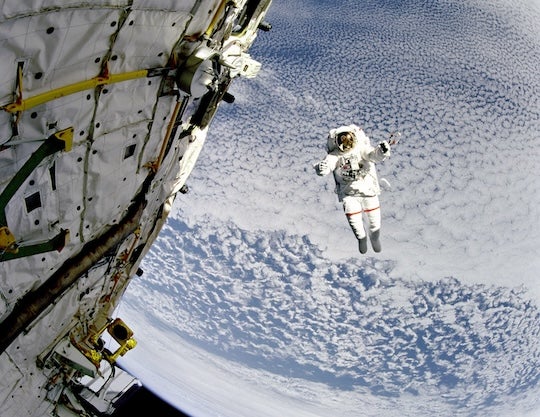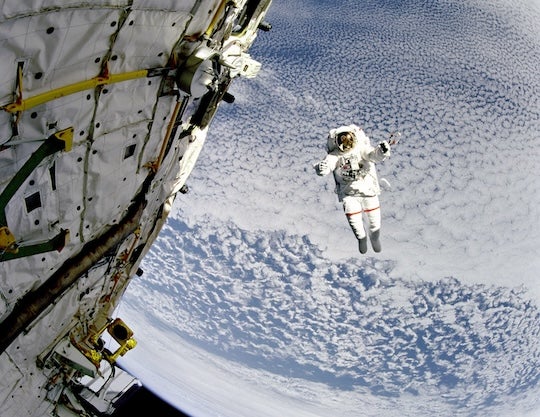
As NASA prepares to return to the moon and the space industry looks ahead to exploring Mars, experts from Rice University, a key partner in space exploration since the founding of the U.S. space program, are available to share insights on a range of space-related topics.
Home to the Rice Space Institute (RSI), Rice has a rich legacy of collaboration with NASA beginning in 1959 and including historic milestones such as former President John F. Kennedy’s 1962 speech at Rice Stadium, which set the nation’s course toward becoming a leader in space exploration.
With the upcoming lunar and Martian missions, Rice’s faculty are ready to offer their expertise in solar physics, space weather, astronaut training, Mars exploration and space robotics, among other areas.
Solar activity and space exploration
David Alexander, professor of physics and astronomy, director of the RSI and executive committee member of the Texas Aerospace Research and Space Economy Consortium, specializes in solar physics and exoplanetary science.
Alexander’s research extends across the broader landscape of space exploration, including discoveries made from the International Space Station (ISS) and the potential for future developments at Houston Spaceport, an urban commercial spaceport, and the Texas Space Commission, which promotes innovation across the state’s civil, commercial and military aerospace domains.
“Every day, space exploration and discovery are providing new technologies, capabilities and knowledge that expand our knowledge of the universe and help pave our next steps into space,” Alexander said.
Space travel and space weather
Patricia Reiff, professor of physics and astronomy and associate director of outreach programs at the RSI, has more than a half-century of experience in space plasma physics. Reiff is a leading expert on space weather, a phenomenon shaped by the sun’s activity that includes auroras, solar flares and cosmic rays.
With the sun reaching the solar maximum period, intense solar flares and radiation storms can impact missions in space. Reiff emphasizes the importance of predicting space weather to ensure astronaut safety.
“This year, we’ve even seen rare and beautiful auroras in Texas,” Reiff said. “We provide short-term but highly accurate predictions of space weather.”
Mars surface and rover operations
Kirsten Siebach, assistant professor of Earth, environmental and planetary sciences, is a key member of the Mars Perseverance rover team whose mission is to explore Jezero Crater on Mars in search of signs of ancient life and to collect samples that may contain evidence of microbial life. Siebach studies Mars’ water history and surface activity, providing critical insights into how Mars can inform our understanding of Earth.
“The geology and surface of Mars offer clues to its past and offer us a new perspective on the history and future of our planet,” Siebach said. “Missions like the Mars 2020 Perseverance rover and future Mars Sample Return are invaluable for planetary science.”
Space robotics and autonomy
Lydia Kavraki, the Noah Harding Professor of Computer Science, is a pioneer in robotic autonomy, including space robotics. Her work includes developing motion-planning systems for NASA’s humanoid robot, Robonaut 2, which was used aboard the ISS in 2011 as the first humanoid robot in space.
“Robots will play a crucial role in space missions from maintaining spacecraft to exploring distant planets where humans cannot safely go,” Kavraki said.
Artificial intelligence in space exploration
Sanjoy Paul, executive director of Rice Nexus and director of the Artificial Intelligence (AI) Houston Institute, focuses on the role of AI in space missions including its role in enabling more efficient decision-making and enhancing robotic operations. His research explores how AI can monitor spacecraft operations and the health of astronauts; examines how AI can help power the ISS; studies the use of cybersecurity in in-space computing or edge data centers in space; and analyzes data collected on the moon and mars and image data of the earth taken from space.
AI has the potential to revolutionize the space industry by improving the design, operation, and maintenance of spacecraft, space stations, and rovers, according to Paul. “AI can also advance space exploration, improve astronaut health, and create innovative applications in agriculture and space medicine,” Paul said.
Astronaut health and performance
John DeWitt, director of applied sports science, spent over 20 years at NASA’s Johnson Space Center focusing on astronaut health. His work includes developing strategies to prevent muscle and bone loss in space, which is critical for long-term missions like those to Mars. DeWitt’s expertise spans astronaut health before, during and after space missions.
“I’ve spent more than two decades working on astronaut health, conducting experiments on the ISS and in parabolic flights to understand better how the body adapts in space,” DeWitt said.
Astronaut teamwork and training
Eduardo Salas, the Allyn R. and Gladys M. Cline Professor of Psychological Sciences, is an expert in teamwork dynamics, including how astronauts can optimize performance in the extreme conditions of long-duration space missions. Salas’ research supports NASA’s preparation for Mars, ensuring astronaut teams can sustain effective collaboration during extended exploration missions.
“Successful space exploration depends on well-functioning teams that can overcome the unprecedented challenges of long-duration space travel,” Salas said.
To schedule an interview with any of Rice’s experts on space-related topics, contact Marcy de Luna, media relations specialist, at marcy.deluna@rice.edu, or Chris Stipes, executive director of news and media relations, at chris.stipes@rice.edu.

